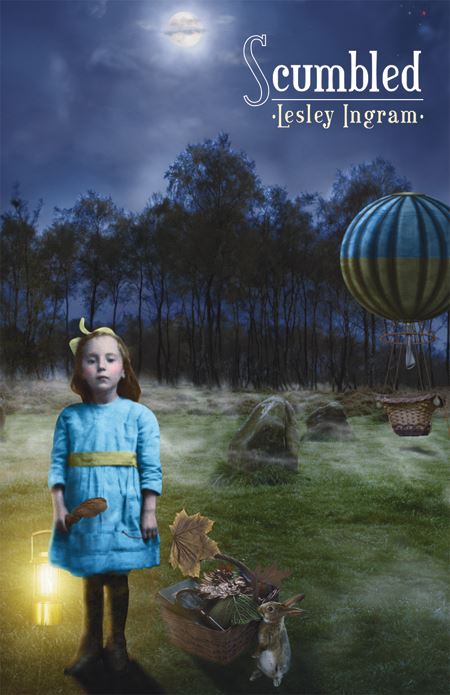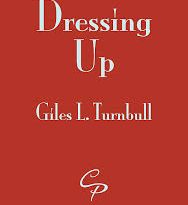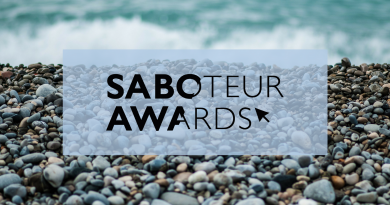Scumbled by Lesley Ingram
– Reviewed by Jessica Traynor –
Scumbled is a collection of mysteries, allusive images and strange echoes. An ekphrastic collection, each of its fifty-two poems responds to a digital image by the artist Maggie Taylor. A cursory Google search reveals these images to be arrestingly skewed Victoriana; mournful men and woman caught in strange, dream-like landscapes.
The question is; how accessible is a collection of ekphrastic poems without seeing the art to which it responds? I decided to read the poems first without seeking out Maggie Taylor’s work. Even without a knowledge of Taylor’s work, Ingram offers us plenty to work with: furze “blazes”, gloves are “made of the skin of unborn calves,” names are “branded on the night”. The imagery in these poems is rich, gothic, absorbing us into a world of half-light and half-life:
In spring
my half sister appears by my side
transparent, magnified,
like albumen
pooled in a mirror.
(‘One and a Half Sisters’)
There is enough of real substance and originality here, paired with a fondness on the poet’s part for archetypal tropes of myth and fairy tale, to invite the reader into the emotional hinterland of the poems. We find ourselves in a dream world that seems essentially feminine; images of the moon, pearls and fish abound, evoking the sensual but occasionally sinister world of an Angela Carter novel. The poems are at their most successful when they seek to channel some tangible emotional trope for the reader. ‘The Woman Who Was Mistaken for a Drystone Wall’ channels the surreal wit of Beckett, but also allows the reader the space to both visualize the woman in question and to envision what she might see. The music in the poem demonstrates another of Ingram’s talents; a lush use of assonance and alliteration that adds to the romance of the poems:
It took years to achieve such a look,
to disguise a cairn with chains of rocks,
a load-bearing façade unstrung.There were cripple holes by her knees
for the sheep to pass through and pee
in the lee of the winds at her feet.
While the effect of so much internal rhyme could threaten to become sing-song, the evocative pairing of sound and concrete description here is seductive.
After reading the collection once, I took some time to consider each of their poems with its corresponding image (helpfully laid out in a grid at the back of the book). On reflection, some of the poems certainly benefit from the visual key the images provide. Poems such as ‘The Boy Who Loves Water’, ‘Learning to Fly’, ‘I Remember’, ‘6 o’ Clock’, ‘Cuttlebone’ and ‘Half Sister’ are among the poems which work best as stand alone pieces; they have the steadying ballast of the personal and lived to weight them, and allow the reader access to the emotional truth of the experience:
After I’d left
I became the dust on my sister’s skin
to be brushed off
polished smootha summer’s shadow
stippling the corners of her eyes
mottling her moodand the words of birds
blew like snow
on the sea.(‘Half Sister’)
There are times though when the individual poems’ balance between ekphrasis and the poet’s own lived experience tips a little towards the former. This creates a sense of distance, of an extra filter between us and the poet. Poems such as ‘The Dressing’, though their imagery is unquestionably beautiful and haunting – “She pricked the shadows / like a devil’s needle, made their memories weep” – feel a little elusive and difficult to access, especially without their accompanying artworks.
This is a singular and ambitious series of poems that demonstrates the poet’s talent for rich, memorable imagery and musical language. They also seek to serve a collaborative function; to reach out and converse with another medium, in this case, visual art. This is an admirable ambition, especially at a time when page poetry is seeking to redefine its connection with other art-forms. There is a sense that Ingram has the potential to push the ekphrastic connections in her work further, perhaps by exploring forms other than the slim volume in which to showcase her work. I would love the opportunity to see the poems exhibited alongside the works which inspired them; perhaps, as Taylor is a digital artist, an online platform might offer intriguing possibilities for the dissemination of this memorable and deeply considered work? This further potential should encourage readers to seek out this collection and Ingram’s future work.





Interesting review, Jess, which makes me want to read Lesley Ingram’s work and seek out the images. Thank you.